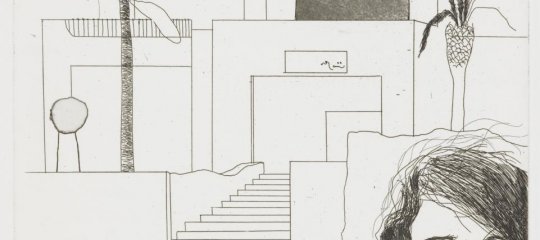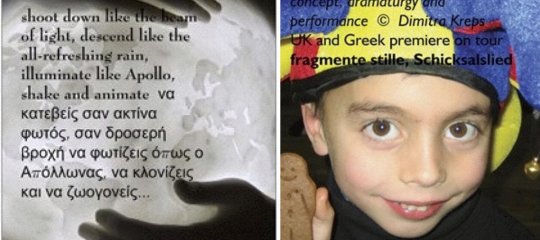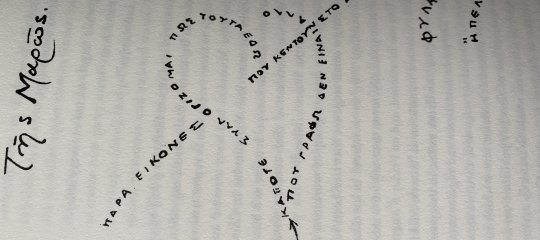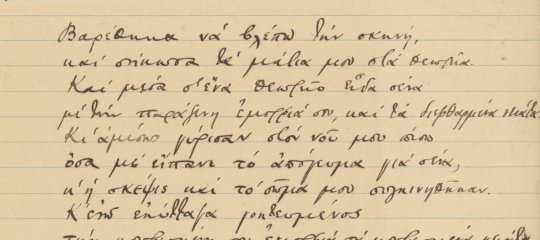Άσκηση μεταφραστικής δεξιοτεχνίας
lectrice writes, "Τώρα που το ακαδημαϊκό έτος φτάνει προς το τέλος του και προσεγγίζει η εξεταστική περίοδος του Ιουνίου, οι μεταπτυχιακοί φοιτητές της Εύης Παπαγιαννοπούλου στο Γλωσσολογικό Ινστιτούτο διασκεδάζουν μεταφράζοντας από τα Γαλλικά ατά Ελληνικά ένα χιουμοριστικό υποθετικό ανακοινωθέν σχετικά με τη γρίππη των πουλερικών. Μολονότι ο κίνδυνος μοιάζει να έχει προς το παρόν απομακρυνθεί λόγω του επερχόμενου καλοκαιριού, θα τον ξαναθυμηθούμε το φθινόπωρο. Το φανταστικό λοιπόν ανακοινωθέν δε θα χάσει τίποτα από τη φρεσκάδα του.
Η ιδιαίτερη δυσκολία της μετάφραστικής προσπάθειας αυτής έγκειται στην απόπειρα αντιστοίχησης και ισοδυναμίας ιδιωματικών και παροιμιακών εκφράσεων στις δυο γλώσσες.
Ευδοκία Παπαγιαννοπούλου"
16 Μαΐου 2006
Communiqué fictif du Ministère de la Santé
URGENCE : Mesures de précautions indispensables en raison du risque de grippe aviaire !!
LES DESTINATAIRES DE CE MESSAGE VOUDRONT BIEN APPLIQUER ET FAIRE APPLIQUER CES MESURES DÈS RECEPTION ;ILS VOUDRONT BIEN RENDRE COMPTE DES DIFFICULTES EVENTUELLEMENT RENCONTREES AU MINISTERE DE LA SANTE.
Mesures de précautions indispensables en raison du risque de grippe aviaire
Les vêtements "pied de poule" ou "pied de coq" sont désormais interdits pour une durée indéterminée.
De même, pour éviter toute mise en quarantaine, il est souhaitable de ne plus appeler ses proches "ma poule" "ma poulette"ou "mon poussin", "mon canard", "mon petit oiseau des îles", "mon petit oiseau de paradis", "ma colombe" ou de "roucouler" avec votre " petite caille".
Ne traitez plus ceux qui vous agacent de "petite dinde", "jeune coq", "oie blanche", "drôle d'oiseau", "perruche" et "perroquet", ni de "chapon" ou de "grue", ni ceux qui se font avoir de "pigeon" ou de "dindon de la farce", ni les étourdis "d'étourneaux" ou de "tête de linotte".
Les coiffures en "crête de coq" sont interdites, de même que les teintures "aile de corbeau", et vous ne devez plus "vous pavaner comme un paon" ni faire la « bouche en cul de poule ».
Vous ne devrez pas "monter sur vos ergots" ni vous "prendre de bec" avec les autres, comme il est interdit de "se voler dans les plumes" .
Il n'est pas non plus conseillé de jeter des neufs à ceux qui chantent faux, d'applaudir celles qui "chantent comme un rossignol" ou de vous montrer "gai comme un pinson".
Ceux qui voudront crier victoire sont priés de ne plus pousser de "cocorico".
Les "poulets" resteront dans leurs casernes et leurs commissariats et n'essaieront pas d'attraper les "pies voleuses".
Les "crânes d'oeuf' sont assignés à résidence dans leurs bureaux climatisés.
Par mesure de précaution, les autres « noms d'oiseaux » sont également prohibés.
Bien que le « coucou » ne soit pas un oiseau migrateur, vous êtes priés de ne plus utiliser ce mot pour vous saluer.
Et si la température descend trop, couvrez-vous pour éviter d'attraper la « chair de poule » et évitez d'avoir un « appétit d'oiseau ».
Mais rien ne vous interdit de prendre votre « plume » pour compléter cet avis à la population et de le faire suivre, sans faire appel aux «pigeons voyageurs », à tous vos amis
Meditation france
Υποθετική ανακοίνωση του Υπουργείου Υγείας
ΕΠΕΙΓΟΝ: απαραίτητα μέτρα πρόληψης λόγω του κινδύνου της γρίπης των πουλερικών !!
Οι αποδέκτες αυτού του μηνύματος καλούνται να εφαρμόσουν και να επιβάλουν την εφαρμογή αυτών των μέτρων άμα τη λήψει του ανακοινωθέντος . Καλούνται να κοινοποιήσουν τις δυσκολίες που ενδεχόμενα συνάντησαν στο Υπουργείο Υγείας.
Απαραίτητα προληπτικά μέτρα λόγω του κινδύνου της γρίπης των πουλερικών.
Τα ενδύματα «πιε-ντε-πουλ» απαγορεύονται εφεξής και για αόριστο χρονικό διάστημα.
Επίσης, προς αποφυγή κάθε πιθανότητας καραντίνας, είναι επιθυμητό να μην αποκαλούμε τους αγαπημένους μας «κοτούλα μου», «πουλάδα μου», ή «πουλάκι μου», «παπάκι μου», «εξωτικό μου πουλάκι», «μικρό μου παραδεισένιο πουλάκι», «καρδερίνα μου» ή να «γουργουρίζετε» παρέα με την «περιστέρα σας" .
Μη χαρακτηρίζετε αυτούς που σας εκνευρίζουν «κότα», «κοκοράκι», «πάπια», «μπούφο», «κάργια», «παπαγάλο», ούτε
« πετεινό» ή «κότα αλανιάρα», ούτε αυτούς που τους πιάνουν κοροΐδα «χαζοπούλια» ή «κουτορνίθια», ούτε τους απερίσκεπτους «χήνες» ή «σπίνους».
Οι κομμώσεις σε «στυλ λοφίου» απαγορεύονται, το ίδιο και οι βαφές σε «χρώμα κορακίσιο», και δεν πρέπει πια να «κορδωνόσαστε σαν παγόνι» ούτε να μορφάζετε με το στόμα σας σαν «ράμφος κότας».
Δεν θα πρέπει «να δείχνετε τα νύχια σας» ούτε «να μπλεκόσαστε σε κοκορομαχίες» με άλλους εφόσον απαγορεύεται να «ξεπουπουλιάζεστε».
Δεν ενδείκνυται διόλου να πετάτε αυγά σ΄ όσους τραγουδάνε φάλτσα, ούτε να επιδοκιμάζετε αυτούς «που κελαηδάνε σαν αηδόνια » ή να τιτιβίζετε «σαν καναρίνια».
Όσοι επιθυμούν να κράξουν τη νίκη τους, παρακαλούνται να μην αναφωνούν «κικιρίκου».
Οι γέρακες θα παραμείνουν στους στρατώνες και τα αστυνομικά τμήματά και δεν θα προσπαθήσουν να συλλάβουν τους «αετονύχηδες ».
Οι «αυγοκέφαλοι» καλούνται να παραμείνουν στα κλιματιζόμενα γραφεία τους.
Προληπτικά, απαγορεύεται να βρίζετε κάποιον « κουτορνίθι ».
Παρόλο που ο «κούκος» δεν είναι αποδημητικό πτηνό, παρακαλείσθε να μην χρησιμοποιείτε πλέον αυτή τη λέξη ως χαιρετισμό.
Αν η θερμοκρασία κατεβεί υπερβολικά, σκεπαστείτε για να μη σας πιάσει ανατριχίλα και μοιάζετε με « μαδημένο κοτόπουλο » και αποφύγετε να τρώτε σαν «πουλάκι».
Όμως, τίποτα δεν σας απαγορεύει να πιάσετε « τη φτερούγινη γραφίδα σας» για να συμπληρώσετε αυτό το ανακοινωθέν προς τον πληθυσμό και να τo προωθήσετε σ’ όλους τους φίλους σας, χωρίς τη μεσολάβηση «ταξιδιωτικών περιστεριών» !
Για τη μετάφραση αυτού του κειμένου συνεργάστηκαν οι φοιτητές:
Βερονίκη Μπουζίνη και Γιώργος Ανθρακεύς.
Τελική μορφοποίηση από την Εύη Παπαγιαννοπούλου.
- Εισέλθετε στο σύστημα για να υποβάλετε σχόλια










